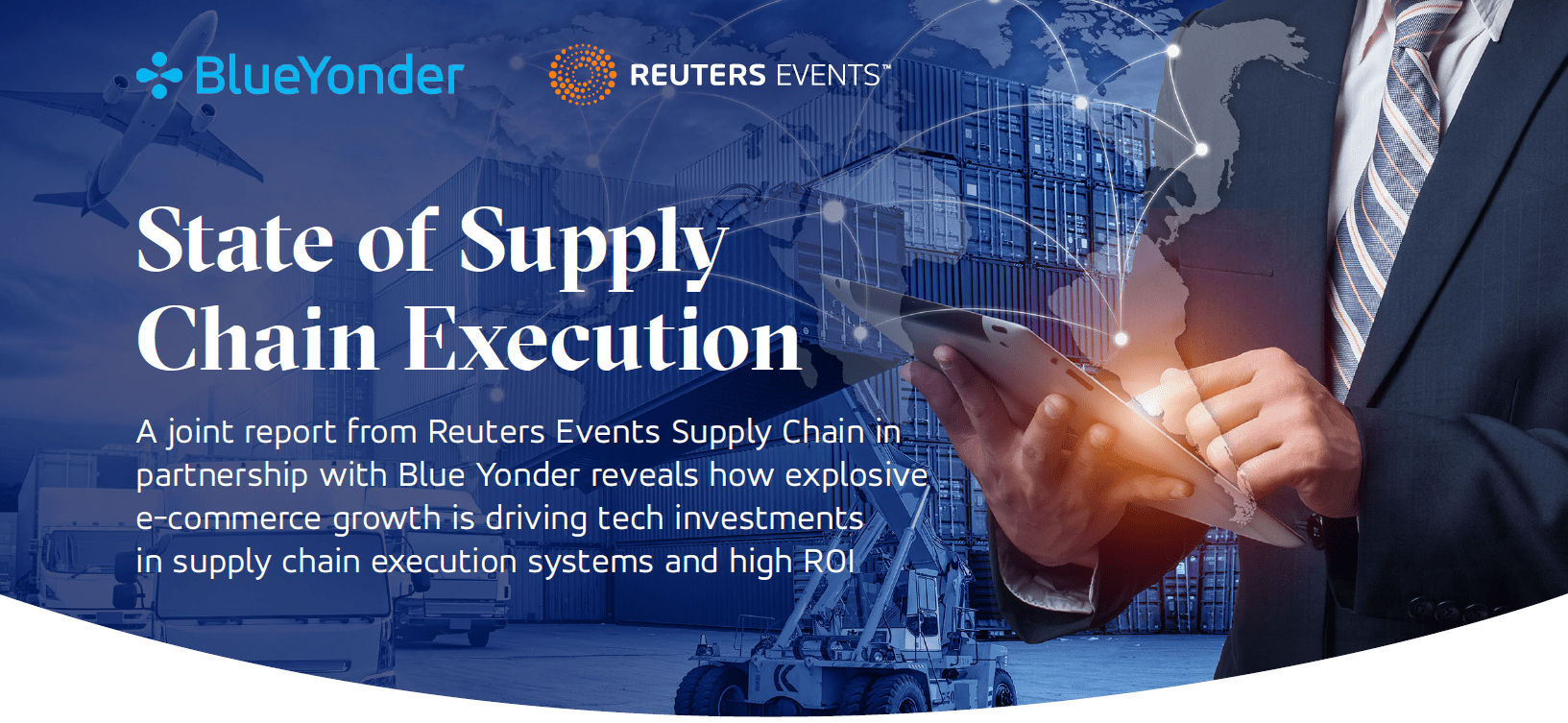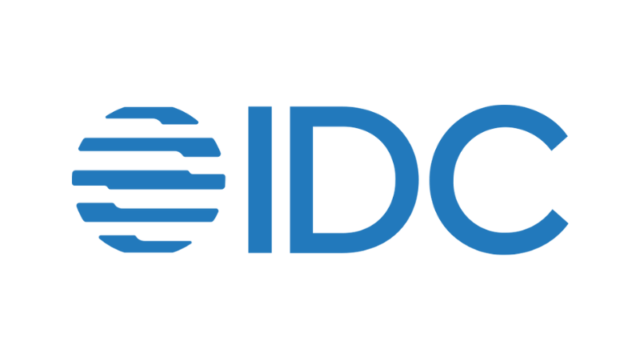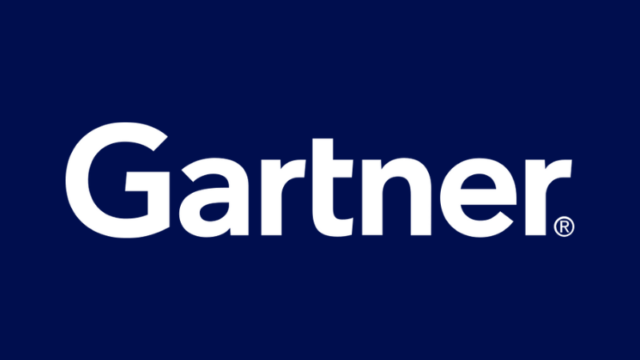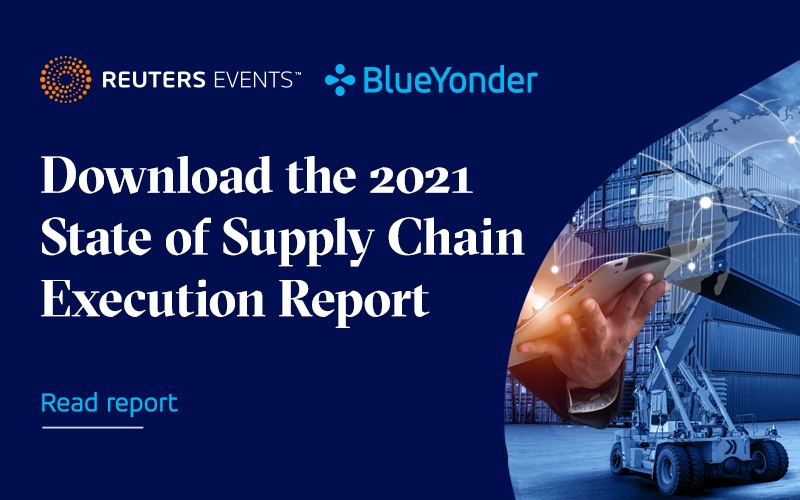Explosive E-Commerce Growth Driving Tech Investments in Supply Chain Execution Systems and High ROI According to New Blue Yonder and Reuters Events Supply Chain Report
Report surveys retailers, manufacturers, and logistics service providers to identify top supply chain priorities and strategies in 2021
SCOTTSDALE, Ariz. – Aug. 10, 2021 – New research from Reuters Events Supply Chain in partnership with Blue Yonder reveals the priority strategies and investments for supply chain execution and risk management within transportation and warehousing. Following a year of intense changes in the logistics industry, The State of Supply Chain Execution Report 2021 analyzed the anonymous responses of supply chain professionals and found that the COVID-19 pandemic, customer centricity, rising e-commerce complexity and costs, need for Direct-to-Consumer (D2C), and the risk of financial peril are propelling retailers, manufacturers and logistics service providers (LSPs) to digitally transform.
E-commerce and D2C Volumes Skyrocket
E-commerce shows no signs of slowing down. Companies looking to capitalize on the omni-channel opportunities created by increased online-order volume over the last 18 months are prioritizing more agile delivery and fulfillment models, like D2C:
- Retailers’/manufacturers’ online sales increased more than 120% over the past year. LSPs have seen e-commerce volumes explode, reporting a 200% increase compared to 2019-2020.
“As the economy transitions to a post-pandemic environment, retailers, manufacturers and LSPs are transforming their transportation and broader supply chain operations to address their most pressing supply chain challenges,” said Raj Patel, senior director, 3PL Industry Strategy, Blue Yonder. “In the long term, investment in execution systems like Transportation Management Systems (TMS) and Warehouse Management Systems (WMS), as well as end-to-end visibility, automation, and cloud strategies will help them – and their customers – build more sustainable, resilient and agile organizations for the future.”
Pandemic Prompts Reevaluation of Supply Chain Risk Management
From constraints on raw materials, to labor shortages, to growing cybersecurity threats on distributed networks, pandemic-related challenges have shifted supply chain risk management priorities:
- Respondents are hesitant to pursue near/onshoring plans, with only 29% of retailers/manufacturers making an investment.
- 63% of retailers/manufacturers stated that dual-sourcing was a favored strategy for risk management moving forward. Constraints on the availability of raw materials caused supply side disruptions, even for those with distributed manufacturing facilities.
- Environmental concerns are also being considered when planning for supply chain risks. Over half (53%) of retailers/manufacturers and half (50%) of LSPs plan to invest in sustainability as a strategy for risk management.

Companies Prioritize Digital-First Practices and Technology Investments
With the growth of e-commerce, investment in modern supply chain technologies and new approaches have become essential for businesses to keep pace with shifting trends and customer expectations. The report found that there are various factors driving investment in supply chain technologies and digital-first practices:
- LSPs cited the pressure to reduce supply chain costs (58%) while also improving service levels for their retailer customers (48%) and dealing with labor shortages (30%).
In the current supply chain environment, companies are moving away from legacy systems and prioritizing technologies that enable visibility for customers and their operations, automate processes and support enterprise agility.
- 63% of retailers/manufacturers and 60% of LSPs agreed that end-to-end visibility is currently yielding the highest ROI in their supply chain execution process.
- Roughly half (48%) of retailers/manufacturers and more than half (57%) of LSPs have a robust cloud strategy in place, helping to create high levels of infrastructure agility that on-premise, legacy technology systems can’t achieve.
“In the current supply chain environment, companies need good visibility into their transportation/ freight and partners that help them operate in a very agile, resilient manner. Knowing this, we’ve been investing in technology that provides good visibility for customers and their operations; tools that support enterprise agility; supply chain automation solutions; and zero-trust IT security tools. Combined, these technology solutions help our customers address their most pressing supply chain challenges while also helping them build stronger, more resilient organizations for the future,” said Richard Ebach, CIO Americas, DB Schenker.
Research Methodology
The 2021 State of Supply Chain Execution report surveyed 589 supply chain professionals globally – 40% from North America, 34% from Europe and 26% from APAC. Information was gathered from May to June 2021 from retailers, manufacturers, logistics service providers, technology solutions providers, start-ups, and media associations.
Additional Resources:
- Download the report and the infographic
- Read the blog
- Attend the LinkedIn Live session on Aug. 17, 4 p.m. ET
About Blue Yonder
Blue Yonder is the world leader in digital supply chain and omni-channel commerce fulfillment. Our intelligent, end-to-end platform enables retailers, manufacturers and logistics providers to seamlessly predict, pivot and fulfill customer demand. With Blue Yonder, you can make more automated, profitable business decisions that deliver greater growth and re-imagined customer experiences. Blue Yonder – Fulfill your PotentialTM blueyonder.com
“Blue Yonder” is a trademark or registered trademark of Blue Yonder Group, Inc. Any trade, product or service name referenced in this document using the name “Blue Yonder” is a trademark and/or property of Blue Yonder Group, Inc. All other company and product names may be trademarks, registered trademarks or service marks of the companies with which they are associated.
###
In The News
- Data Cloud Podcast: Building the World’s Largest Supply Chain Data Cloud with Duncan Angove, CEO at Blue Yonder

- Forbes: We’ll Never Fully Trust Artificial Intelligence With Our Businesses — And That’s Okay

- Automotive Industries: Blue Yonder accelerates automotive innovation with strategic flexis acquisition for supply chain transformation

- eCom Logistics Podcast: Modern Logistics Challenges: Strategies from Blue Yonder’s Ann Marie Jonkman at Modex 2024

- Logistics Viewpoints: How Can Your Supply Chain Become Even More Resilient?

Analyst Reports
- IDC ProductScape: Worldwide Warehouse Management Systems, 2024

- IDC’s Worldwide Retail Industry Spending Guide Taxonomy, 2024

- Gartner Critical Capabilities for Transportation Management Systems, 2024

- Gartner Magic Quadrant™ for Transportation Management Systems, 2024

- IDC Market Glance: European Supply Chain Planning, 1Q24

Media Relations Inquiries
Marina Renneke, APR
Global Corporate Communications Senior Director
Rossella Benti
EMEA Corporate Communications Director
Meredith Mackintosh
NA Corporate Communications Manager
mediarelationsteam@blueyonder.com
480-308-3037
Analyst Relations Inquiries
Celeste White
Vice President, Global Analyst Relations
Sarah Hart
Program Director, Global Analyst Relations
Lindsey Hiefield
Program Manager, Global Analyst Relations
analyst.relations@blueyonder.com

